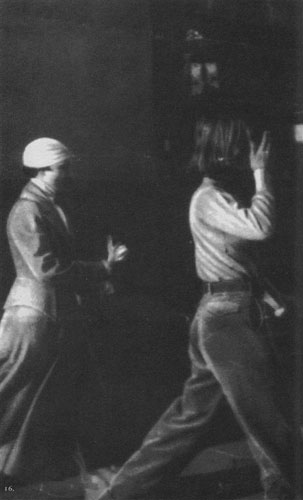(or: musings on past obsessions and a new publication)
In my attempts to make sense of my encounters with ‘the archive’, I’ve stumbled upon Maryanne Dever’s article “Garbo’s Foot, Or, Sex, Socks, and Letters” (2010), which not only namechecks about 50% of my interests in its title, but also – and more importantly – makes a wonderful case for archival absences (“nothing”) as evidence. The introductory paragraph reads as follows:
In November 2006 I found myself staring at item no. 80 from Box 23 of the Greta Garbo material held at the Rosenbach Museum and Library in Philadelphia […] this visit was the culmination of a six-year desire to see what ‘nothing’ looked like.
(Dever 2010 163)

“Nothing,” of course, being the relationship between Greta Garbo and Mercedes de Acosta – according to the Rosenbach Museum and other “stake holders” in Garbo’s posthumous fame, a wishful thinking, a figment of people’s imagination. Certainly not a defining part of the life and legacy of one of cinema’s most enigmatic stars.
If we count more metaphorical archives (of popular culture, of auto/biographies), then I’ve searched them for “something” – meaning, traces, evidence, inspiration, whatever you wanna call it – where “nothing” was supposed to be for a very long time. In my early twenties, I devoured biographies like Barry Paris’ Garbo and de Acosta’s infamous Here Lies the Heart. I might have watched more movies and series for subtext than for main text. Always sure, there was something. (I’m not claiming my interest in gossip is neutral.)

Yet I am still fairly new to archives as actual spaces, as buildings, and an an apparatus with its own rules, pleasues, and pains, where we look for the physical evidence of past lives. I haven’t spent even close to six years with Charlotte Cushman or with archival material – the first time I ordered a manuscript item in a reading room was September 2018. It was May 2019, when I first opened a queer woman’s diary in Philadelphia, about a mile away far from the Rosenbach Museum in the library of the Historical Society of Pennsylvania. It was Anne Hampton Brewster’s (who was or wasn’t Charlotte Cushman’s lover in the 1840s), and I – like Dever – wanted to know what “nothing” looked like.
I had, by then, also gained an intimate familiarity with the excitement (and disappointment) of opening a new box, just arrived from storage, its content available to only a select few privileged enough to have the occasion, funding, and time to request them.
Brewster’s diary has by now emerged as a central object in our study on the uses of gossip in nineteenth century US American culture: it’s become a touchstone for assessing contemporary takes on Charlotte Cushman and her intimate relationships and for thinking through networks of knowledge among the fascinating group of professional female artists who assembled in Rome between the 1850s and 1880s. For a special issue of Anglia on “Archives” (2020; 138.3), I tried to put some structure and context to my thoughts on the relationship between LGBTQ lives, gossip, and institutionalized archives. The result is titled “Of Gaps and Gossip: Intimacy in the Archive” and is available here.
If you don’t mind spoilers, here’s my conclusion:
Lisa Merrill ends her biography of Cushman with the prognosis that her subject “will continue to change, as more letters, hints, gossip, and diaries surface” (2000: 266; my emphasis). Gossip is thus both a cautious reminder of what we are not supposed to know and a unique source for what we nonetheless might know about the past: “a species of truth, deliverable in no other way than word of mouth, personal letters, diaries and journals published posthumously, and not obtainable otherwise” (Epstein 2012: xiii).
The recording of this specific truth hinges to a large extent on the public importance of those involved. Anyone interested in Cushman is exceptionally lucky in that regard, as not only she herself was famous, but so were most of the people to whom she was close. Otherwise, the evidence of Cushman’s sexuality, her marginality, would certainly have been lost – partially, as we have seen, by her own design, partially by the influence of those who felt beholden to her “splendid name”. As it is, however, the intimacy both betrayed and documented in gossip has become a focal point of departure for research about her life and others like hers. Tracing such intimacy across emotional networks brings to light a different form of intimacy, too, namely that between researcher and object of study. Peter Burke describes archival research as generally “somewhat different from other kinds of research [… and as] allow[ing] a closer relationship with the past” (qtd. in Pallares-Burke 2002: 140). Putting a finer point on this, Ann Cvetkovich speaks of the “convergence of the archival turn with the affective turn”, particularly in the research marked by “deep attachments to the objects” (2015: xvii).17 As gossip depends on the affective ties between those engaging in it to shed light on each “small, shared truth” (Spacks 1982: 24) it uncovers, so, too, the unearthing of its traces requires intimate knowledge and fosters the intimate ties with those who enter the archive. An embrace of gossip is then also an incentive to turn to the archive with renewed fervour for evidence of intimacy as well as for turning to intimacy for evidence.
(author: Katrin Horn)